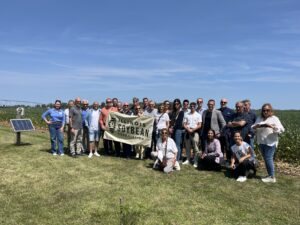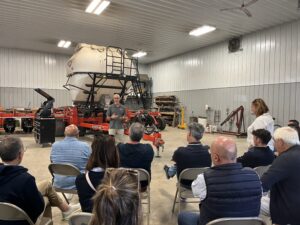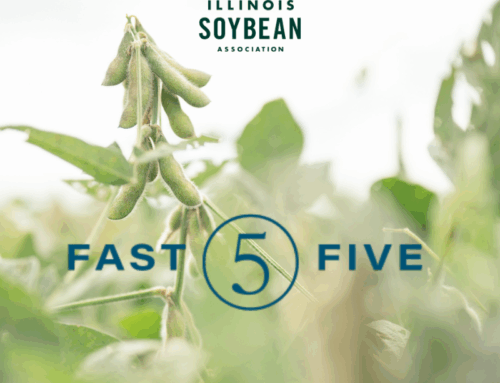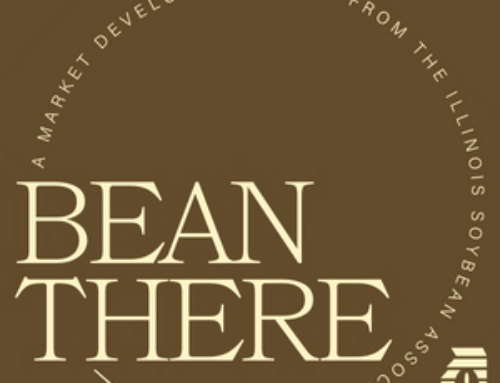As the summer growing season began to wind down in mid-August, another season was just getting started for the Illinois Soybean Association (ISA). The period between mid-August and early September, within ISA, is better known as “trade visit season.” International buyers who are already in the U.S. for Soy Connext, Farm Progress Show or other meetings and conferences request farm visits and office briefings through ISA to learn more about the soybeans they buy.
My own farming operation in Kankakee, Illinois has been involved with these visits for the past six years, which is longer than my tenure on the ISA Board. The initial memory has begun to fade; however, the impression of those early visits led me to pursue a position on the ISA Board of Directors. My contribution to visits this year included hosting a group of 28 buyers from the European Union (EU) in late August following their trip to Soy Connext. Attendees included individuals from Spain, France, Italy, Germany and Portugal, with diverse backgrounds ranging from CEOs to traders and nutritionists.

International groups come to learn about my farming operation, to see beans in the ground, and to hear about the changes the region has experienced through my 36 years of farming. With farmers across Illinois practicing different farming techniques, I enjoy showing these visitors a glimpse into my generational farm. Alongside my father, we farm corn, soybeans, and wheat while incorporating non-GMO fields in our rotation. Especially with buyers from the EU, it is vital to highlight the sustainability of our farming practices with soybean production as they continually increase their focus on environmentally conscious components of livestock feed, human nutrition and industrial products. My farm maintains a strong focus on the environment with conscious passes through the field and minimizing inputs where possible to protect soil and water quality. I stress that these practices, meaning I constantly work to improve my approach, are continually evolving due to annual changes in price, contracts and research that inform my decisions. Visits to both the field and machine shed are needed to truly show the variation in a farmer’s responsibilities. This is then followed by many, many pictures with the equipment and soybeans in the field.

With each team, there is always a question as to how language might impact our conversation. Luckily, there was no major language barrier for this group, so the conversation went a step further.I was able to turn the tables and rather than talking at them, I asked questions about their preferences when it comes to purchasing and what kind of regulations impact their decisions. As I listened, I heard how the changes with new EU regulations for sustainably sourced soybeans that are going into effect at the start of the year are burdensome and unclear for farmers, exporters and importers. It was refreshing to learn the uncertainty in regulations are not just a concern in the U.S. Companies within the EU have yet to hear the full extent of these changes. I also heard that lower crude protein levels found in U.S. soybeans can be limiting, as compared to soybeans sourced from South America. Unfortunately, I don’t have much impact on protein levels, but I now realize that I can share this message with Illinois farmers about the growing need for certified, sustainably sourced soybeans.
I am always reminded on these visits that listening is an important part of every conversation. Rather than farming with tunnel vision, my eyes are opened to the possibilities of expanding our reach into new markets by improving my work in the field. By listening to these customers, I walk away with a new perspective and understanding that by opening my farm, I am opening new opportunities for all farmers.

